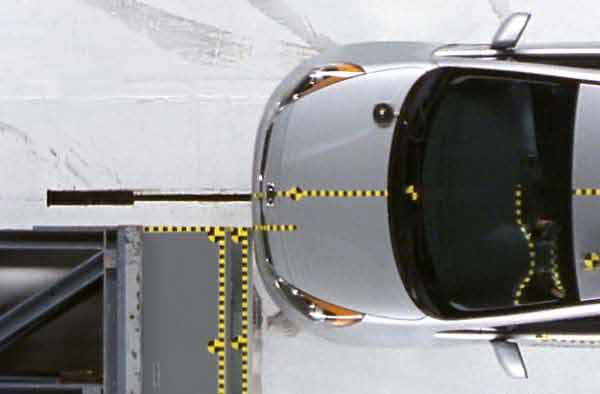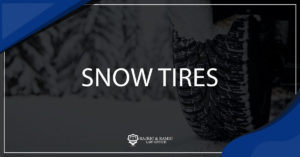As early as the mid-1950s, car safety testing began in sophisticated test facilities according to set criteria. Thus, the American IIHS, founded in 1959, began testing car safety in various categories of tests. Today, car safety tests have spread to almost all car safety systems. Find out below how to know which car is the safest and how safety testing is done.
IIHS – Institute for Road Safety Insurance
IIHS assesses the vehicle’s resistance to an accident using six tests:
- Moderate overlap of the frontal accident,
- The slight overlap at the front on the driver’s side,
- Slight overlap of the front side,
- Roof strength testing
- Testing headrest strength and
- Testing seat strength.
For frontal collision prevention assessments, the institute conducts tests at low and moderate vehicle speeds with automatic braking systems. Low-speed testing systems are conducted to test the amount of damage to the vehicle that is important to insurance companies. IIHS also evaluates headlight systems and hardware for attaching a child seat known as LATCH.
For crash tests that we conduct vehicles, we buy from dealers just like ordinary consumers. If the test is performed at the request of the manufacturer and is not part of our regular test schedule, then the manufacturer will reimburse us for the vehicle.
The descriptions below explain how each test is conducted and how the results are translated into grades.
Frontal impact with moderate overlap
Frontal tests with moderate overlap, most vehicles passed with poor or marginal rating. Today, all vehicles mostly get good grades. The passenger compartments are much stronger than they used to be. They keep falling and allow seat belts and airbags to do their job.
In the frontal test with moderate overlap, the vehicle travels at a speed of 40 mph towards a barrier with a deformable side made of aluminum honeycomb. The bulkhead is just over 2 feet high.

Frontal impact with little overlap on the driver’s side
To help encourage further improvements in frontal collision protection, in 2012 the institute introduced a small frontal collision overlap test on the driver’s side. The test is designed to replicate what happens when the front left of a vehicle collides with another vehicle or object such as a tree or an auxiliary pole. This crash test is a challenge for some seat belt and airbag designs as passengers move both forward and to the side of the vehicle.
In the front test with a small overlap on the driver’s side, the vehicle travels at a speed of 40 mph towards a rigid obstacle 5 feet high. A test dummy representing a man of average size is placed on the driver’s seat. Twenty-five percent of the total vehicle width strikes an obstacle on the driver’s side. In addition, the same testing is performed for the side of the car on which the passenger is sitting.

Vehicle side impact test
Side accidents account for about a quarter of passenger vehicle deaths in the United States. Protecting people in side collisions is a challenge because the sides of the vehicle have relatively little room to absorb energy. Car manufacturers have made great strides in side protection by installing side airbags and strengthening vehicle structures. The testing program has played a key role in achieving these improvements.
The side airbags, which are standard for most new passenger vehicles today, are designed to prevent people from colliding with the interior of the vehicle. They also help by spreading the impact forces to a larger area of the passenger’s body. However, side airbags alone are not enough. Strong vehicle structures that work well with airbags are also crucial.

Roof strength testing
Thousands die every year in a rollover. The best way to prevent these deaths is to prevent the vehicle from overturning. Electronic stability control significantly reduces overturning, especially fatal for a single vehicle. When vehicles roll, airbags with side curtains help protect people from the inside. For these safety technologies to be most effective, the roof must be able to maintain the passenger’s survival space when it falls to the ground during a rollover. Stronger roofs crumble less, reducing the risk of people being injured by contact with the roof itself. Stronger roofs can also prevent passengers from being ejected, especially those who do not use seat belts.
In the test, the strength of the roof is determined by pushing the corner metal plate on one side of the roof with a light but constant speed and measuring the force required to break the roof. The force applied to the weight of a vehicle is known as the ratio of strength to mass.
The roof must withstand a force of at least 4 times the weight of the vehicle before the panel breaks the roof by 5 inches. For an acceptable rating, the minimum required strength-to-weight ratio is 3.25. For the marginal grade it is 2.5. Anything lower than that is bad.

Seat and headrest strength testing
IIHS tests seats and headrests with a special dummy that has a realistic spine. The seat in the vehicle – with a doll in it – is mounted on sleds that have been moved to simulate a rear-end collision.
The headrests have improved since the Institute began evaluating them. In 1995, only 3% of measured head restraints received good grades. 82% rated it as bad. Among the latest models, most headrests have good geometric grades, and others are acceptable. IIHS ratings have forced manufacturers to pay attention to the design of the headrest.
Testing of car lighting devices
IIHS engineers measure the range of a vehicle’s headlights as the vehicle travels straight and in curves. Track sensors measure how far light is propagated from the vehicle with an intensity of at least 5 lux. Luxury is a unit of illumination or the amount of light that falls on a surface. By comparison, a full moon in a cloudless night illuminates the ground below at about 1 lux.
Light intensity is measured at curves and on the left side of the roadway. Immediately, the second measurement is performed at the place corresponding to the left corner of the two-way road. This allows engineers to measure the lighting on the right and left immediately. With most headlights, there is a steep drop of light on the left side of the straight road to prevent glare from oncoming vehicles.
The glare of oncoming vehicles is also measured by the low beam in each scenario. Engineers record the percentage by which the light intensity exceeds a given threshold.
Frequently Asked Questions
- Q: How are vehicles selected for testing?
- A: The vehicles we are testing are not selected, but are nominated by insurance groups as candidates to be tested next. Some manufacturers nominate their own vehicles when they are sure they will get good grades, as many manufacturers conduct their own tests when developing vehicles
- Q: The institute sometimes publishes its tests to pieces, shit like mid-size truck ratings – which one is next and will you ever test large SUVs like Suburban or Expedition?
- A: I’m not sure which group we’ll test next, but I can say we won’t test large SUVs because they don’t represent a large enough market share to test. We don’t test heavy trucks for the same reason, there just aren’t enough of them on the road. (I wasn’t happy with this answer because they’re testing trucks like the F150 and Silverado, which are similar to their SUV cousins, and big SUVs seem to be growing in popularity)
- Q: Which test is the most difficult?
- A: A headlight test because what we recognize as good other organizations like Consumer Reports may rate differently. We are looking for rays that do not dazzle other drivers while producing adequate light for the driver, which is a very small sweet spot that can rely more on consumer preferences than on what production produces.
- Q: Is their manufacturer the one you would recommend as the safest?
- A: Every vehicle you see on our TSP and TSP + list is the vehicle with the best performance and safest you can buy.




